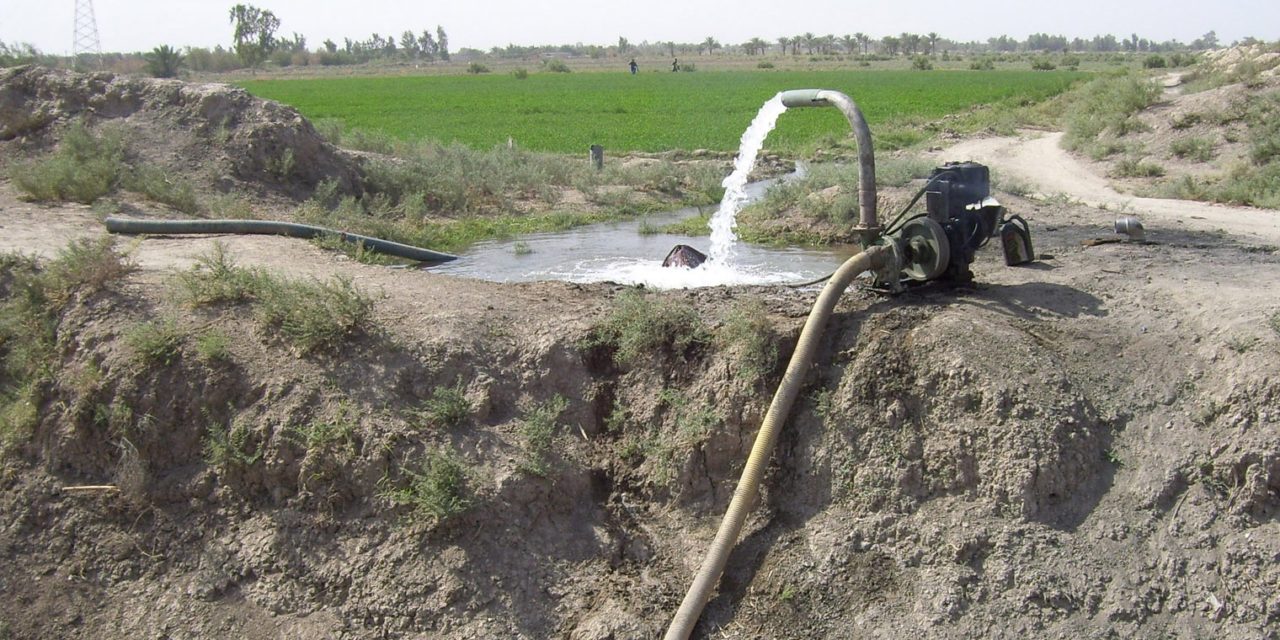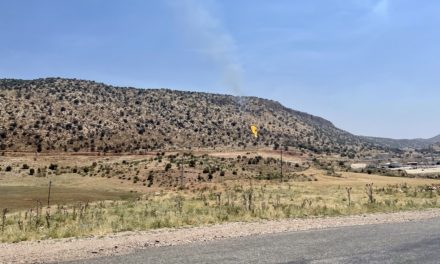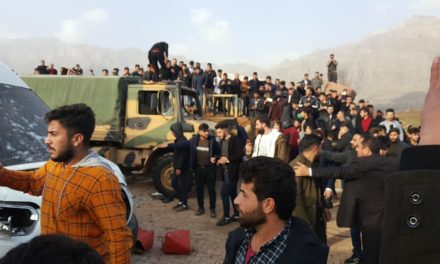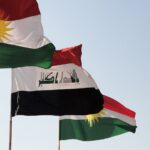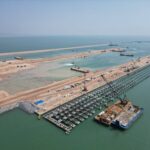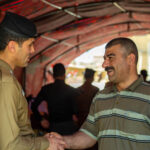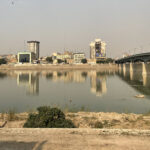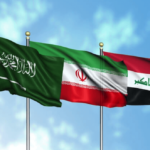Irrigation is considered the primary factor for raising the productivity of lands in the world. According to the Food and Agriculture Organization of the United Nations (FAO) roughly 20% of the world’s croplands are irrigated, but they produce around 40% of the global harvest. In developing countries, irrigation also improves economic returns and can boost production by up to 400%, but due to poor management about one-third of the world’s irrigated lands have reduced productivity. In the case of Iraq, about half of Iraq’s farmers would directly benefit economically from improvements in the irrigation based on international experience confirming that irrigation development can have a significant positive effect on the situation of financially disadvantaged populations.
Irrigation has been essential for agricultural production in Mesopotamia for over 6000 years. The Tigris and Euphrates Rivers have exerted a significant influence in the evolution of agricultural zones in modern day Iraq. For instance, the estimated irrigation potential was increased by 29.41% from 1976 to 1990, which has been attributed to the development of water storage facilities for water received from the two rivers.
In the first half of the twentieth century, irrigation was developed in Iraq either by merely digging a channel on the riverbanks or by a series of barrages and weirs for raising water levels to facilitate off-take. From the 1920’s and onwards, large landholders along the margins of the rivers also developed pump irrigation. Land suitable for agriculture is about 11.11 million hectares (which is about 25% of Iraq’s landmass), whereas land technically and economically suitable for irrigation is about 5.72 million hectares. The main irrigated crops are wheat, barley, rice, maize, vegetables and dates.
About 70% of the country’s cultivated area is now under irrigation while the remaining 30% are under rain-fed cultivation. In some areas supplementary irrigation is used to complement rainfall, the entire natural rangeland relies solely on rainfall. 62.8% of the areas under irrigation receive water through gravity irrigation projects, 36% pumped from rivers and major channels and 1.2% from groundwater aquifers and springs.
However, there are a set of challenges associated with irrigation in Iraq that need to be addressed. The first one is related to outdated and damaged irrigation infrastructure. Headworks have operated for a long time without maintenance or proper management plans. Most pumping stations were built in early 1970’s and although many worn-out components have been replaced, hundreds of large irrigation and drainage pumping stations are still in poor state. Most are severely run down, and some can no longer be repaired. The primary, secondary and tertiary canal networks are also degraded due to lack of maintenance. Deterioration of canal linings, the outgrowth of weeds and sedimentation has reduced conveyance capacity significantly. With drainage system incomplete, FAO estimated that less than one-quarter of Iraq’s area developed for irrigation is equipped for drainage. Many drains are blocked and many of the drainage pumps used for lifting effluents into the outfalls have broken down.
Another central issue in water resources management is the protection of water quality. Iraq’s irrigation water is not naturally saline. The problem has arisen from the combination of over-irrigation, poor drainage, and high evaporation rates. The increasing salinity of irrigation water is exacerbating many problems. The level of salinity in the Euphrates River is high and is expected to increase with the development of irrigation in the basin, particularly in the dry season. Consequently, irrigated cropping areas were diminished and productivity severely affected. Salinization and water-logging have reportedly contributed to the abandonment of about 1.5 million hectares, which is 40% of the area developed for irrigation.
Drainage works, combined with upstream damming has also had a devastating impact on the Iraqi Marshlands. The Central and Al-Ham’mar marshlands have completely collapsed, with the numerous economic benefits provided by the marshlands from fishing, haunting and rice cultivation being lost.
Apart from Iraq’s ineffective irrigation system, irrigation by itself is problematic. Irrigation is the largest abuser of water, more accurately fresh water, especially in developing countries where the irrigation methods are insufficiently developed. In Iraq, it represents almost 80% of the overall water withdrawal in the country. However, severe water shortages are developing in the arid and semi-arid regions, with the inescapable conclusion is that irrigation has to produce more food with less water. Added to Iraq’s case is the development of irrigation projects in the upstream countries, notably the southeast Anatolian GAP project in Turkey and the irrigation projects in Syria, which will reduce Iraqi irrigation potential, something that poses a security and diplomatic challenge.
With the lack of a strategic policy for water in the region in addition to the absence of education that helps farmers to avoid abusing water, Iraq would allow the later to gamble with the future of agriculture and the water security in Iraq.
Iraq must work hard on implementing the following solutions. Iraq needs to develop viable and economical solutions for “reclamation” of affected lands, including heavy leaching for flushing out accumulated salts, the construction of buried field drains, and open collector drains and outfall drains to bring salinity levels down. There is also an urgent need to manage salinity hazard by matching landscape capability when making decisions on new locations for irrigation development or on-farm field suitability.
Furthermore, regular maintenance of existing irrigation infrastructure, construction of new irrigation schemes and emergency repair to any irrigation facility should all be catered for in a short-term plan. On the medium and long-term, it is essential for Iraq to complete the storage dams currently under construction, and well as all land reclamation projects.
Iraq also needs to work hard on minimizing water losses of conveyance network channels, which involves proper cleaning of irrigation and drainage networks from weeds and sediments, routine cleaning of sub-surface tile drains, and concrete lining of selected earth canal.
It is vital that Iraq maximizes its utilization of the available surface and groundwater supplies. Efforts undertaken to achieve this goal require the rehabilitation of those old and worn out water pumping units and electric motors at irrigation and drainage pumping stations, drilling and developing the tube wells and deep wells in areas depending on groundwater resources, as well as the provision of deep and good pumps and generating sets for wells.
The efficiencies of water diversion and conveyance must be achieved, and on-farm irrigation water applications must be implemented. This could be achieved through expansion in land reclamation suitable for surface irrigation as well as the introduction of modern overhead sprinkler irrigation and localized drip irrigation systems at farming fields.
Using remote sensing and geographic information systems (GIS) as a handy tool that offers an excellent option to traditional techniques in monitoring and evaluation of waterlogged and saline areas. Last but not least, Iraq should be using new techniques for forecasting consumer demands of an irrigation area using on-farm water-use information systems and methods like a hybrid methodology and genetic algorithms.

Shwan Mohammed
Shwan A. Mohammed is a PhD researcher in water and hydraulic structure engineering. He teaches at the Polytechnic University of Sulaimaniyah and specializes in ground water management.

